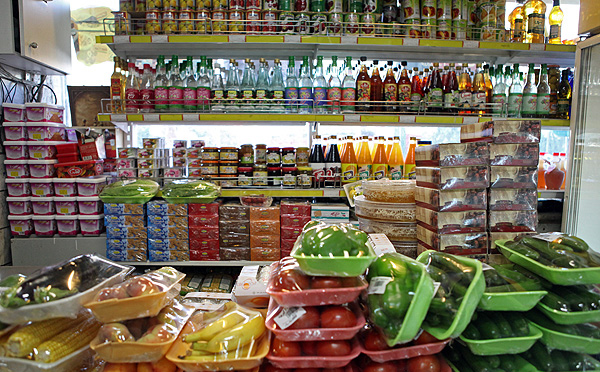If you take a walk in Tehran, more than any other shop, you will probably see traditional independent grocery stores. Some of them, located right next to each other, are intensely competing over customers by using very simple strategies such as offering delivery services.
Based on a household budget survey conducted by the Central Bank of Iran, the average household expenditure for the Iranian year ending in March 2014 was $720 per month (based on market exchange rates) throughout the whole country. The average household expenditure of Tehran province, which has the highest figure among all other provinces, was $1,030 per month for this period. This figure rises to $1,150 for the city of Tehran. Tehran’s population is 8.4 million, according to the latest reports by Statistical Center of Iran and Tehran’s Municipality, and for the wider metropolitan area the population rises to 14 million.
With an average household size of 3.2, more than 2.65 million households currently reside in Tehran. In the Iranian year ending March 2014, these households spent more than $36 billion, of which more than $6 billion constituted grocery costs. A report by London-based market intelligence firm, Euromonitor International Ltd shows almost 96% of demands for grocery in Iran are supplied by independent small grocers with relatively low standards. Modern hypermarkets have a 4% market share in Iran’s grocery market; for Tehran this market share rises to almost 15%.
Over 10,000 independent small grocer’s and supermarkets are present in Tehran’s grocery market. This is due to the stage of evolution which the grocery retailing industry is currently in.
In the early stages of Tehran’s rapid population growth, three to four decades ago, small independent grocers were evenly located among each neighborhood. So, as new neighborhoods started to develop, new markets for grocery stores were created. But as Tehran is reaching the maximum population it can support, the emergence of new neighborhoods have slowed down and citizens are witnessing an intense rivalry among retailers.
Since independent grocery retailers more or less sell identical products, strategies that they can utilize to gain advantage over their competitors are very limited. So most of this competition takes the form of positioning their shop. Therefore, instead of sharing the neighborhood’s market, they opt for the convenient spot for the whole neighborhood and tightly assemble in the most advantageous place. It is a very common sight in Tehran to see two or even three grocers located practically at the same place.
At this stage, the industry is thirsty for consolidation. This consolidation can either form by previous competitors joining in a partnership or a by a bigger third party competitor taking over the business of the previous ones. However, current participants tend to be reluctant to form partnerships due to insufficient laws, cultural tendencies and traditional structure of the industry.
On the other hand, as the young population desires higher standards of living, their shopping habits would shift more and more toward less frequent all-in-one-place shopping. Also, Tehran’s extremely heavy traffic and the difficulty to commute around the city further support this desire.
Several hypermarkets are already present in Tehran’s retail market. State-owned Refah, Shahrvand, Etka, Qods, and Yas chain stores have been present for almost two decades, but due to their traditional structure and governmental ownership, they have not succeeded in gaining a significant market share. Multinational retailer, Majid Al Futtaim Hypermarkets LLC has opened up several hypermarkets in Tehran, Shiraz and Isfahan under the name of “Hyper Star”, but compared to the mega malls Majid Al Futtaim owns and runs in Dubai, Iran’s Hyper Stars are very small.
The whole retail market in Tehran is currently estimated to be over $12 billion. As the economy is starting to recover, the retail industry, particularly the non-grocery sector, has great potential for growth in the coming years. In addition, as modern shopping and brand awareness gains greater popularity among Tehranis, traditional retail markets are becoming more prone to exploitation by large multinational investors.


